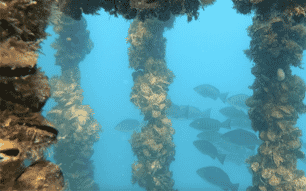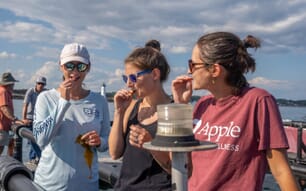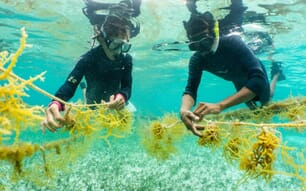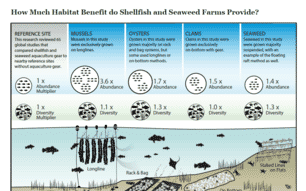European and North American readers may be most familiar with the recent excitement around new developments in kelp aquaculture in places like Norway and Maine, where pilot and small-scale commercial projects are underway.
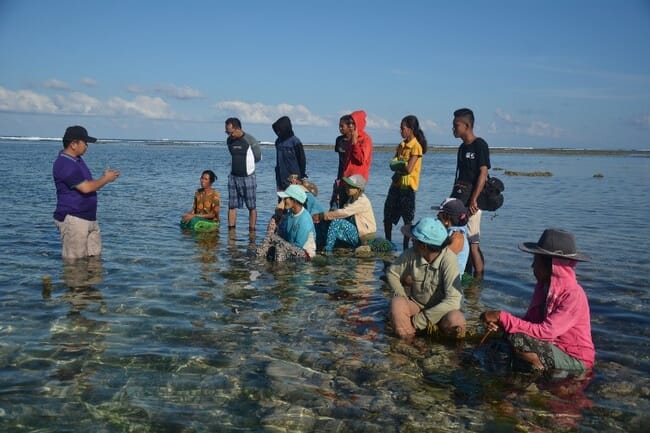
© The Nature Conservancy
But seaweeds already represent a booming sector, with the global industry worth more than US$6 billion per year and red seaweed production in Indonesia alone growing almost 900 per cent over the last decade. At The Nature Conservancy (TNC), we think it’s time this vibrant subsector received a little more attention.
The bulk of the world’s tropical red seaweed production occurs in South-East Asia. The largest producer of red seaweeds is Indonesia, where TNC has been developing on-the-ground seaweed-aquaculture improvement projects for the last three years.
Processed red seaweed products enter a global marketplace where they are primarily used as thickening agents (in the form of carrageenan or agar), which are common in industrial food products and cosmetics. Interest is also emerging in novel applications of tropical seaweeds to address other key societal needs – such as sustainable animal feeds, biofuels, pharmaceuticals, and nutraceuticals.
In these countries, tropical seaweed aquaculture is an important industry globally, particularly for women, rural populations and indigenous people. Over 1 million coastal Indonesians engage in seaweed aquaculture, many of whom live in remote communities with few other economic opportunities. World Bank analysis shows that expanding seaweed farming in these and other tropical areas has potential to further boost local incomes, food security and environmental health.
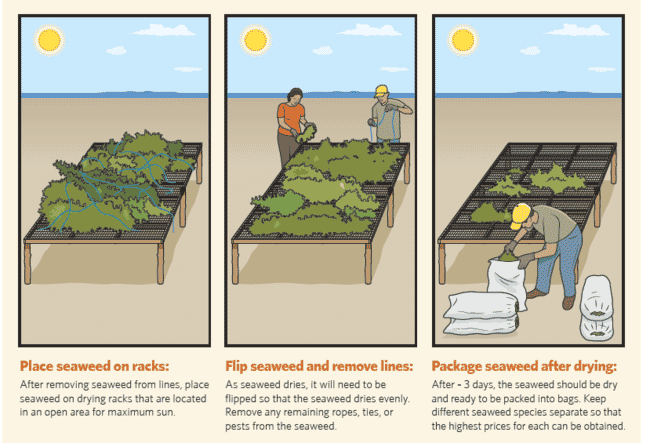
© The Nature Conservancy
However, this is not an industry without challenges. Disease reduces yields; lack of consistent product quality constrains price; and poor environmental practices have resulted in habitat degradation and marine plastic pollution. These challenges must be addressed to help the industry achieve the true “triple bottom line” of delivering economic, environmental and social progress.
For this reason, TNC is releasing a new three-part guide: Coastal Conservation and Sustainable Livelihoods through Seaweed Aquaculture in Indonesia.
Over the last three years, TNC has been working in communities in Indonesia’s southernmost province, Nusa Tenggara Timur, to help improve and advocate for seaweed aquaculture as an alternative livelihood to combat overfishing. This collaboration is focusing on areas including improving seaweed production and drying practices for greater economic yield; providing training for value-added products and financial management; and reducing habitat impacts to climate and wildlife-critical coral reef, mangrove and seagrass ecosystems.
Through our aquaculture work, we determined the need for a guide not only for seaweed farmers, but seaweed purchasers and ourselves as a global environmental nonprofit – to be clear and transparent about the goals we’re working to advance, and to provide a replicable structure that can be adapted for different seaweed farming communities across the world.
Our guide provides information and recommendations for three primary audiences:
- Seaweed buyers, with suggested actions to increase the sustainability of their supply chains.
- Conservation organisations, with information on how they can effectively work with seaweed farming communities to maximise potential for environmental and social gains.
- Seaweed farmers, with information on how they can improve their production practices for maximum environmental and financial benefits.
Including a guide for buyers as a key component is a strategy that is rooted in the belief that, particularly for countries that often have less stringent regulatory controls in place for environmental protection, working with businesses can represent a successful path towards conservation gains while also supporting coastal livelihoods. And that increasing the sustainability of supply chains is beneficial to buyers not only for obtaining sustainable eco-labels for market differentiation, but because poor practices – whether environmental, social, or economic – can undermine long-term business viability.
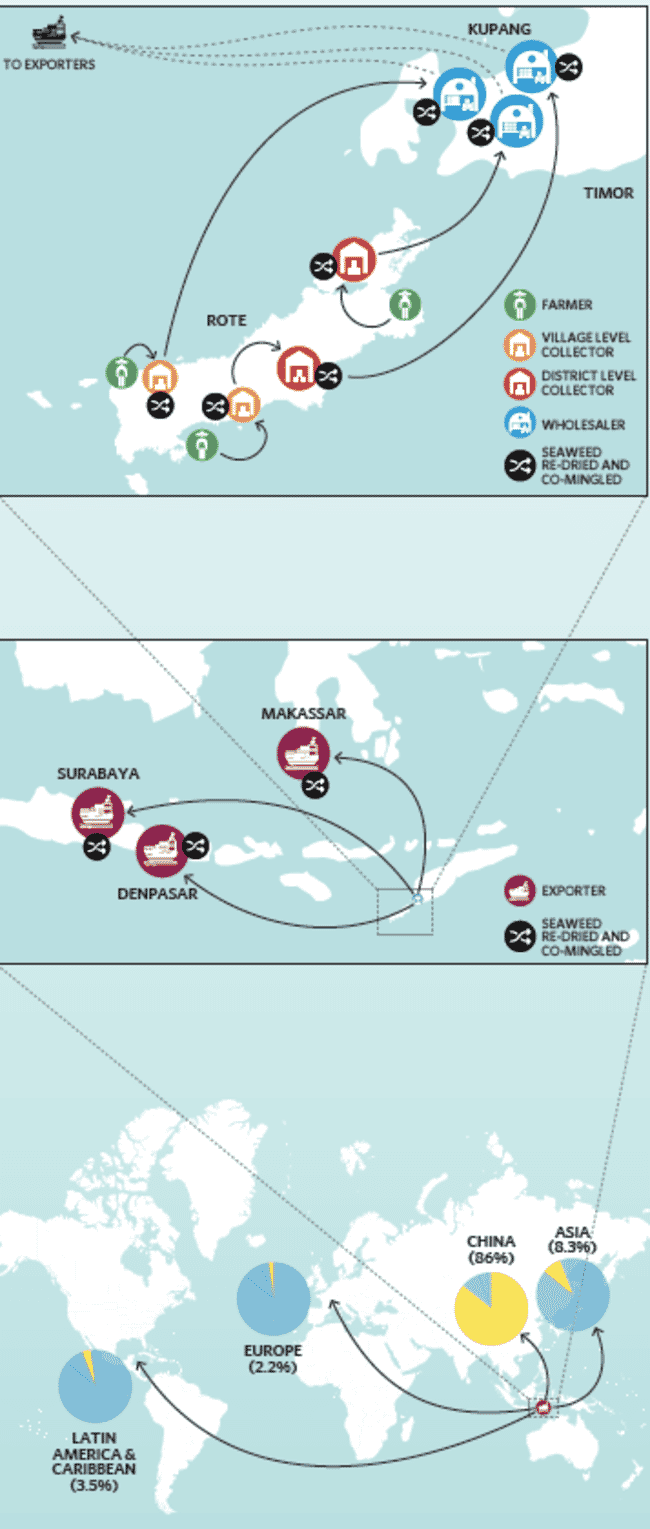
© The Nature Conservancy
For seaweed buyers, the new guide provides an overview of both the global and Indonesian carrageenan markets, including: export and price trends; sustainable and organic seaweed certification programmes; how companies can develop and implement internal purchasing and traceability standards; different commodity traceability models; the traceability challenges and current supply chain of seaweed in Indonesia; and recommendations for how to increase traceability of seaweed from farmer to purchaser.
For conservation organisations working in seaweed aquaculture, we outline why TNC sees this industry as a gateway to wider conservation gains and social empowerment. We discuss opportunities and challenges of seaweed farming and how our Indonesian team is using a community development strategy called SIGAP (“Aksi Inspiratif Warga untuk Perubahan” or “Communities Inspiring Action for Change”) to overcome these challenges and invest in the opportunities.
The third part of the guide is an illustrated “how-to” for seaweed farmers, which will be used in concert with the on-the-ground training sessions that TNC and other partners have been providing to local communities.
As our work continues, we hope that the new guide will evolve, serving as a living document to incorporate emerging information and approaches to increasing the sustainability of tropical seaweed along the supply chain that also have potential to be replicated globally. We are also developing a guide for seaweed farming in Belize that builds upon the structure established for our initial Indonesia guide.
What remains constant throughout this thinking, though, is that reliable sources of seaweed farmed in responsible ways are not only of economic and ecological benefits to coastal communities and environments, but also to seaweed buyers across multiple global sectors, from packaged foods to cosmetics, who are interested in securing more sustainable and traceable sources of seaweed for their own industries.

